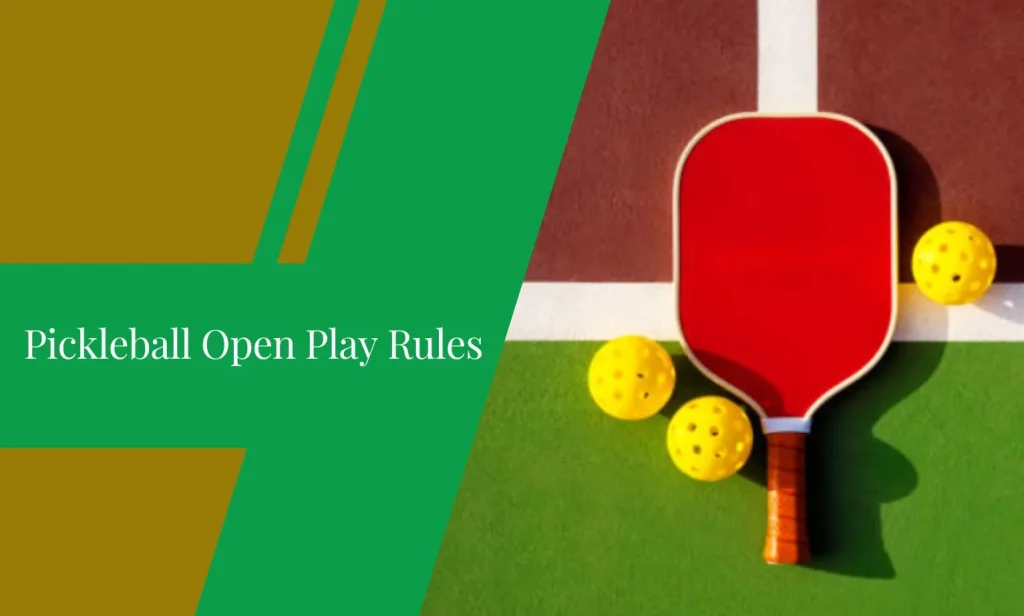As a pickleball enthusiast, I understand the frustration of arriving at a public court only to find a group of regular players monopolizing the courts. However, this is where the concept of Open Play comes in.
Open Play is an opportunity for players of all skill levels to come together and play on the courts for a set time frame. This allows players to come and go as they please, without having to set up games or know anyone in advance.
In this article, I will be sharing some tips on how to make the most of Open Play pickleball in your area. Whether you’re a seasoned player or just starting out, Open Play can offer a fun and enjoyable experience for all.
I will be discussing the benefits of playing with players of similar skill and speed, and how this can improve your game. Additionally, I will provide insights on how to take advantage of Open Play opportunities, and how to maximize your improvement.
Do Not Forget to Read: What Are The 5 Rules Of Pickleball

Do Not Forget to Read: Latest Pickleball Paddles
Pickleball Open Play Rules
Pickleball’s Open Play is a casual and enjoyable environment where individuals of various skill levels can come together to engage in games with different partners.
The primary goal is to provide an opportunity for players to learn from one another, and there are no restrictions on swapping paddles or playing exclusively with specific individuals.
Joining Open Play
Open Play is a predetermined time where local pickleball players show up at the courts to play. Players can come and go without ever setting up a game, and if you know enough to play a game, you’re welcome to join in and stay as long as you’d like.
It’s a great way to meet other players, especially if you’re new to the game or traveling but still want to play.
Most venues have a player rotation system, and games are played to 11 points. There are various systems used for Open Play, including:
Paddle Rack or Buckets:
This system is used in most public courts, and it keeps track of who plays next. Players put their paddles at the end of the rack or in the bucket, depending on whether they won or lost, and the bottom four paddles are pulled from alternating buckets as courts free up.
Dry Erase Board:
Some courts use a Dry Erase Board to track who plays next. Players write their name on the board and wait until their turn comes up.
Musical Chairs:
A line of folding chairs is set up alongside the courts, and the first seats rotate in as a court finishes, with the remaining players moving up, and those coming off sitting at the opposite end of the line.
Timed Play:
Some clubs play for 10 minutes at a time, and then the winning team rotates clockwise, while the losing team stays on the court and splits.
Do Not Forget to Read: Pickleball Spin Serve Rules Changed Or Banned
Additional Techniques to Make Game Play Faster
When others are waiting, some additional techniques can make game play go faster, including:
Rally Scoring:
Instead of points only being awarded to the serving team, points are scored on every serve, making the games go faster.
Play to 9:
Games are played to 9 points, and then all four players rotate off.
Rules and Etiquette
Most Open Play settings have rules, written or unwritten, that govern play. It’s best to ask an experienced player to explain the ropes if you are new to the group.
In general, most Open Play settings are pretty welcoming, except if you are playing with the wrong skill levels. If you’re new to the group, make sure to get a lay of the land.
Improving Your Pickleball IQ
Frequently during Open Play, there will be periods where you are waiting to play. Once you’re done socializing and catching up with your friends, you’re in a prime spot to learn and improve.
You get to watch and study the actual game played by you and your contemporaries on the court.
The way to do this is to identify shot selection and basic strategy that makes sense and those that could be re-thought.
Look at the movement of the players and their position on the court. This is not just watching the game as entertainment but studying the game as it unfolds. Learning the rhythm of a good rally as well as the disharmony of a rally played without intentionality.
Working on “X”
Open play can vary immensely from game to game. One way to make all of your time during Open Play valuable is to work on specific skills, such as serves or volleys. A 3-minute game that ended in 11-1 can be frustrating, but focusing on one skill and using that time to perfect it can.
Do Not Forget to Read: What is Double Bounce Rule in Pickleball?
Open Play vs Drop-In Play
The main differences between Open Play and Drop-In Play are the level of structure and competition. Open Play is more casual and social, while Drop-In Play is more organized and competitive.
Open Play allows players to play with different partners and opponents, while Drop-In Play usually involves playing with the same partner or against the same opponents in a rotation.
Another difference is the level of skill required. Open Play is suitable for players of all levels, from beginners to advanced players, while Drop-In Play is often more suitable for intermediate to advanced players who are looking for a challenge.
Both Open Play and Drop-In Play offer unique experiences and benefits for pickleball players. It’s important to understand the differences between these two styles of play so that you can choose the one that’s right for you.
Do Not Forget to Read: What Is A Fault In Pickleball?
Conclusion
In conclusion, Open Play pickleball is a great opportunity for players of all skill levels to come together and enjoy the game in a casual and social environment.
The primary goal of Open Play is to provide a chance for players to learn from one another, and there are various systems used to keep games running smoothly.
Additionally, Open Play offers the chance to improve your game by observing and learning from other players. While Drop-In Play offers more organized and competitive play, Open Play provides a unique experience and benefits for players of all levels.
By understanding the differences between these two styles of play, players can choose the option that best suits their needs and goals.
Do Not Forget to Read: How To Clean Pickleball Paddle

Michael Stevenson
Hi, my name is Michael Stevenson and I’m a passionate pickleball player. I’ve been playing the game for many years and I’m pretty highly skilled at it. Pickleball is one of my favorite topics so naturally, I love to write about it.
Whether it’s tips for beginners, guides for experts, reviews of new paddles, or advanced playing techniques – if it relates to pickleball then I have something interesting to write about it. So if you’re looking for entertaining and informative information on the topic of pickleball, look no further than my written works!